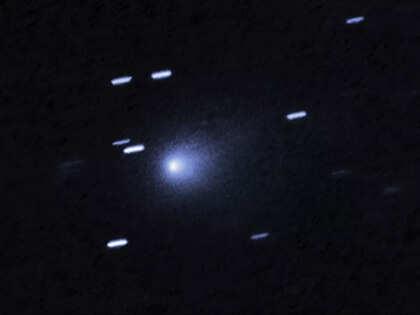Scientists around the world are abuzz with excitement following the recent discovery of an interstellar comet passing through our solar system. Unlike typical comets originating from within, this rare visitor hails from beyond the boundaries of our cosmic neighborhood, offering an unprecedented opportunity to study material from another star system. Researchers believe that analyzing this celestial traveler could unlock new insights into the formation and composition of distant planetary systems, potentially reshaping our understanding of the universe. NPR reports on why this interstellar comet has captured the attention of the scientific community and what its journey means for astronomy.
Interstellar Visitor Offers Unprecedented Insights into Cosmic Origins
This rare celestial visitor has offered researchers a unique window into the building blocks that shaped our solar system and beyond. Unlike typical comets originating within the confines of our solar system, this interstellar object carries with it chemical signatures and physical properties that suggest a vastly different origin narrative. Its trajectory and speed confirm it did not form here, prompting a flurry of observations and data collection from telescopes worldwide. Scientists have seized this opportunity to analyze its composition, which includes complex organic molecules rarely detected in other comets, hinting at the universal nature of the ingredients necessary for life.
Among the key revelations are the comet’s unusual isotopic ratios and high carbon content, which challenge existing models of planetary formation. Researchers found:
- Elevated levels of heavy water (deuterium), offering clues about water delivery mechanisms across star systems.
- Distinctive dust grain structures, suggesting cosmic dust aggregation processes differ outside our solar neighborhood.
- Evidence of complex organic compounds, reinforcing theories on the universality of precursors to life.
| Feature | Characteristic | Implication |
|---|---|---|
| Isotopic Ratios | High D/H ratio | Indicates diverse water origins |
| Organic Molecules | Complex hydrocarbons | Supports panspermia hypothesis |
| Dust Composition | Porous, fluffy grains | Suggests different formation environment |
Scientists Explore Potential for New Understanding of Solar System Formation
Recent observations of an interstellar comet passing through our solar system have opened a rare window into cosmic history, prompting scientists to rethink established models of planetary formation. This visitor, originating beyond the familiar boundaries of our system, carries with it pristine materials that predate our Sun. By analyzing its composition, researchers aim to identify the building blocks that were present not only in our neighborhood but also in other parts of the galaxy, potentially offering clues about the universality of planetary formation processes.
Key points emerging from ongoing studies:
- Unusually high concentrations of volatile compounds, unlike typical solar system comets
- Evidence of organic molecules that could inform theories on the origin of life
- Trajectory data helping refine models of interstellar object dynamics
| Property | Solar System Comets | Interstellar Comet |
|---|---|---|
| Composition | Water ice, dust | Water ice, complex organics |
| Origin Distance | Within 50 AU | Several light years away |
| Speed | Typical orbital velocities | Hyperbolic, exceeding escape velocity |
Call for Enhanced Observation Strategies to Track Future Interstellar Objects
Recent detection of interstellar visitors has underscored critical gaps in our current astronomical surveillance capabilities. To effectively monitor these fleeting cosmic travelers, scientists are advocating for systems with higher sensitivity and faster response times. This includes expanding networks of wide-field telescopes, integrating advanced AI algorithms for real-time object identification, and enhancing ground- and space-based radar arrays. Without these upgrades, many objects passing through the solar system may go unnoticed, limiting opportunities to study their composition and origins.
Key proposed strategies focus on:
- Automated alert systems capable of distinguishing interstellar trajectories within hours.
- Collaborative international data-sharing platforms to aggregate observational inputs globally.
- Dedicated missions aimed at intercepting or closely observing interstellar objects.
| Observation Method | Current Capability | Proposed Enhancement |
|---|---|---|
| Optical Telescopes | Limited sky coverage, manual vetting | Automated wide-field scanning, AI-driven alerts |
| Radar Systems | Focused on known near-Earth objects | Expanded range for early detection of fast movers |
| Infrared Surveys | Periodic, limited resolution | Continuous monitoring with enhanced sensitivity |
| Data Processing | Manual analysis, delayed alerts | Real-time AI and machine learning integration |
To Wrap It Up
As researchers continue to analyze the rare interstellar visitor, its unique composition and trajectory promise to deepen our understanding of the cosmos beyond our solar system. This extraordinary discovery not only challenges existing theories but also opens new frontiers in the study of celestial bodies traveling across the galaxy. For scientists and space enthusiasts alike, the fascination with this cosmic wanderer highlights the ever-evolving nature of space exploration and the mysteries still waiting to be uncovered.






























